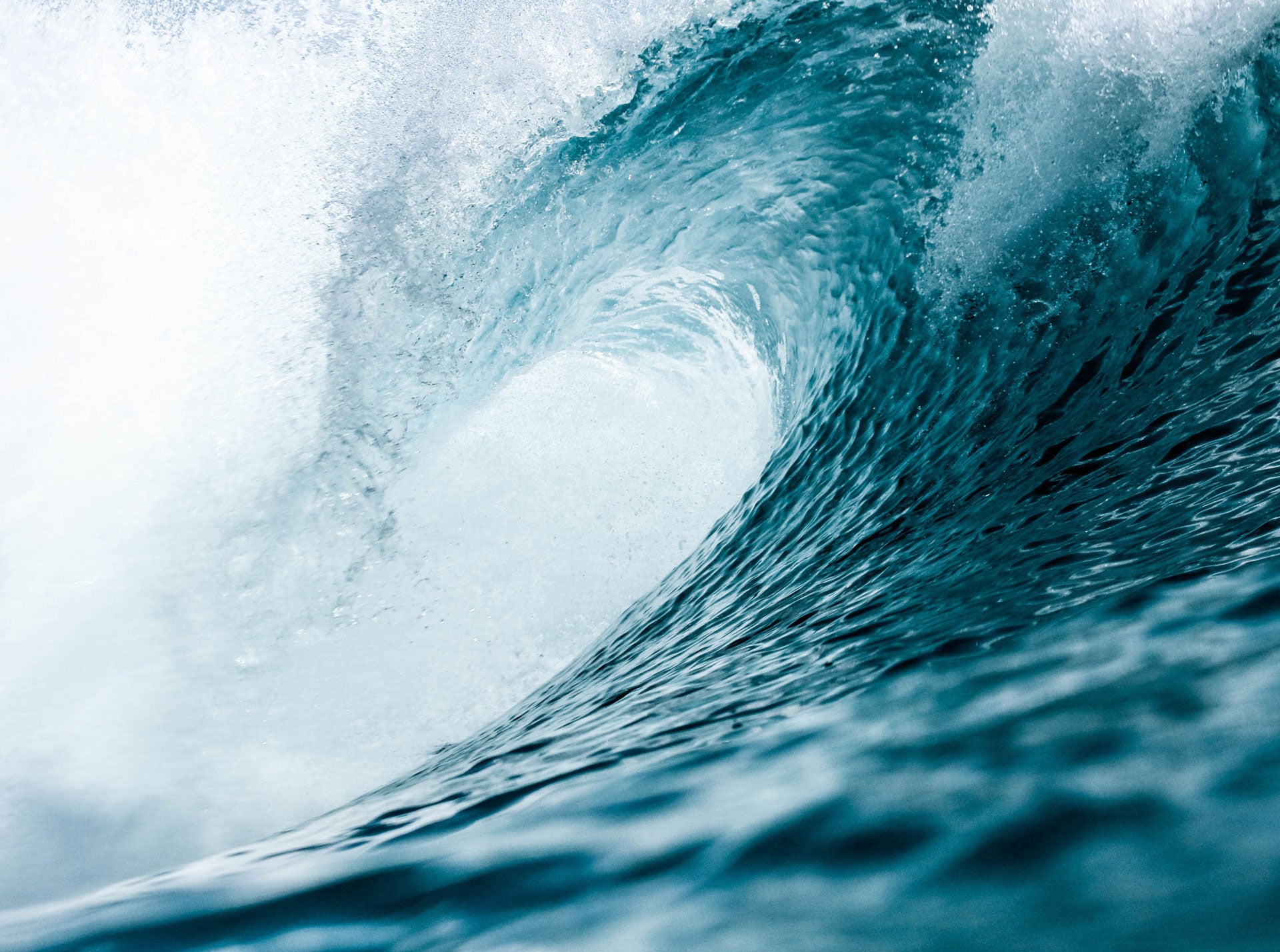
With the UK going coal-free for a record-breaking 90 hours over the weekend, energy sources such as solar and onshore wind now play a key role in generating electricity. However, with the urgent need for new energy sources to replace the 60% of the electricity produced worldwide by fossil fuel combustion, it has become necessary to look further afield to alternative energy sources.
One such option is wave power. With oceans covering 75% of the planet, the energy generated by waves holds huge potential.
However, a string of issues has seen investment in this area lag behind other sources – although renewed efforts are slowly increasing its use. But will wave power ever become a major player in the renewable energy sphere?
Why has wave power been slow to take off?
Wave power uses the vertical movement of the waves to generate energy. This is generated either by a floating unit that sits on the surface of the water harnesses the kinetic energy, or through a device attached to the ocean floor.
Although other renewable energy sources such as wind and solar are growing in prevalence, they do not provide a constant supply of energy, meaning a combination of different sources is needed, with wave and tidal power a key alternative to reaching the goal of keeping the global average temperature increase under 2ºC.
However, the potential of wave power has not yet been fully realised, partially due to the higher cost of building structures in the ocean, the possibility of damage from storms, the practicalities of maintaining offshore wave farms, and the potential damage to marine environments.
How well do you really know your competitors?
Access the most comprehensive Company Profiles on the market, powered by GlobalData. Save hours of research. Gain competitive edge.

Thank you!
Your download email will arrive shortly
Not ready to buy yet? Download a free sample
We are confident about the unique quality of our Company Profiles. However, we want you to make the most beneficial decision for your business, so we offer a free sample that you can download by submitting the below form
By GlobalDataLast year, Energy Technologies Institute said that wave power was too expensive and therefore not be a priority for renewable energy investment.
According to Yale Environment 360, although wave power has made “halting progress” it is “decades behind other forms of renewables” with greater amounts of “money and research required for it to even begin to catch up”.
Currently, there are only nine power stations that run on wave power, with these generating small quantities of electricity. However, despite this companies such as Eco Wave, AW-Energy, Seabased and Carnegie are making waves in this area, with a number of projects and research trials ongoing.
Commercial-scale wave power
Commercial-scale generation of wave power is starting to take off, with the first ever grid-connected wave power station switched on in 2015.
A number of companies are working to address some of the hurdles associated with implementing wave power. Recently, energy company Eni announced plans to build industrial-scale wave power stations off the coast of Italy.
Another company looking to make the deployment of wave farms an easier and more cost-effective option is Wello, which aims to enable about 10% of worldwide clean energy production by 2050. It believes that the answer to this lies with the penguin.
Rather than the sea bird of the same name, this refers to a wave power capturing unit, which looks similar to a small boat and floats on the surface of the sea.
The newest version of the Penguin, WEC2 , can produce 380% more power than previous models, and the company describes it as being the most “efficient device on the market capable of harnessing the power of ocean waves”.
According to Wello, the technology to harvest wave energy is ready for deployment, and with scale, its cost will soon be lower than that of other renewables.
With sourcing developments and improved production, Wello expects to reduce the costs of a Penguin by 30% by 2020.
The technology solves some of the problems associated with wind power, through being “ready for deployment, has proven survivability under stressful sea conditions, and is protected through patents”.
Could wave power be the next big renewable energy source?
Although private companies are waking up to the commercial potential of wave power, organisations are calling on governments to focus efforts and funding on supporting the development of the necessary infrastructure to make it a major energy source.
Some experts believe it could eventually provide up to 50% of energy consumed, but at the currently rate, ocean power is forecast to produce only 1 gigawatt of electricity by 2020 worldwide, according to Yale Environment 360.
However, for the UK in particular, progress is being made. According to Marine Power Systems’ Making Wave Power Work report, published in 2017, the UK has emerged as a leader in the sector, thanks to a £450m investment, responsible for a third of the EU’s wave energy.
Over the next twenty years, the demand for electricity for industrial and everyday use will increase by 28%, and with finite space on which to build onshore wind and solar farms, it may become necessary to look to other untapped resources.







